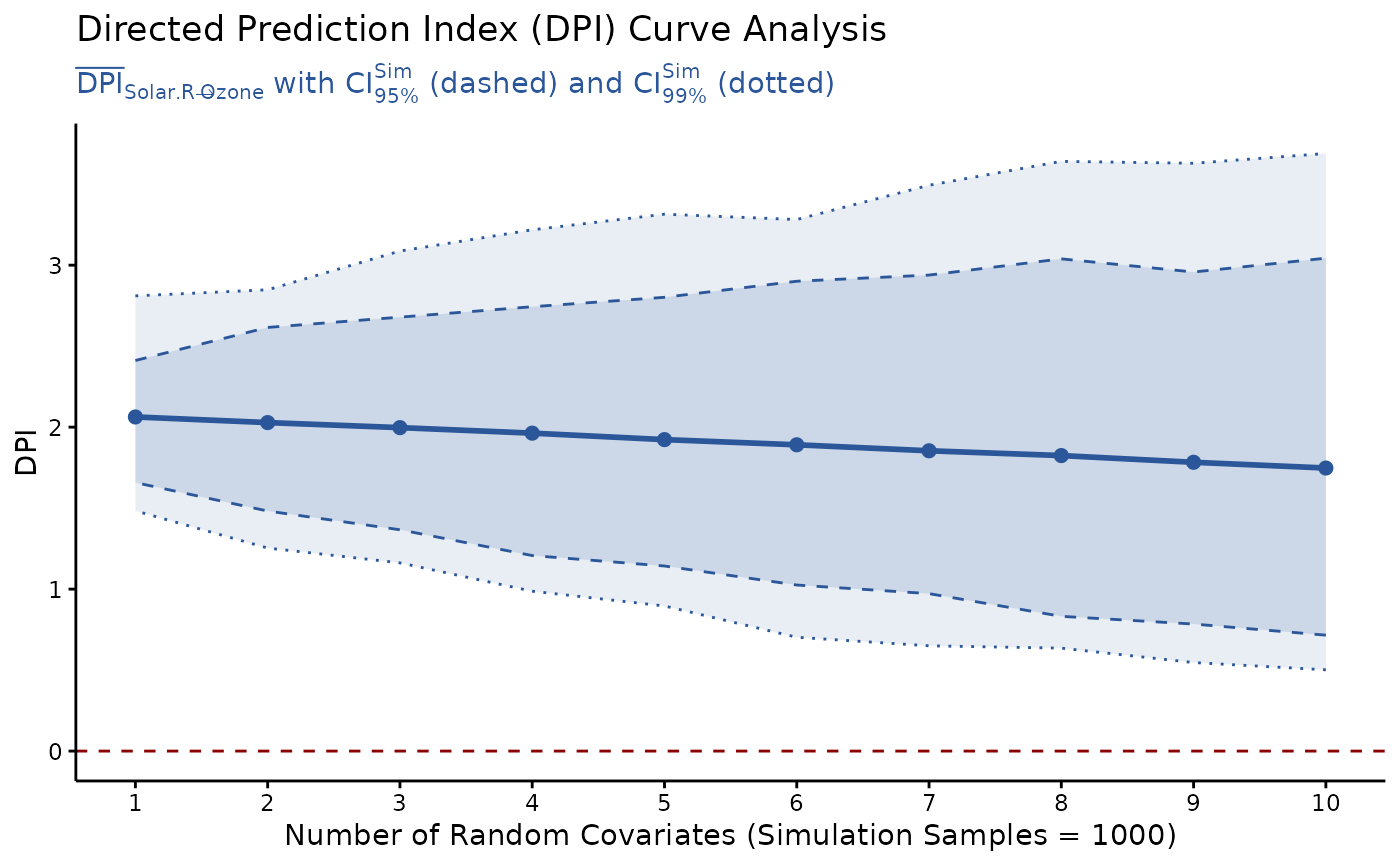DPI curve analysis across multiple random covariates.
Usage
DPI_curve(
model,
x,
y,
data = NULL,
k.covs = 1:10,
n.sim = 1000,
alpha = 0.05,
bonf = FALSE,
pseudoBF = FALSE,
seed = NULL,
progress,
file = NULL,
width = 6,
height = 4,
dpi = 500
)Arguments
- model
Model object (
lm).- x
Independent (predictor) variable.
- y
Dependent (outcome) variable.
- data
[Optional] Defaults to
NULL. Ifdatais specified, thenmodelwill be ignored and a linear modellm({y} ~ {x} + .)will be fitted inside. This is helpful for exploring all variables in a dataset.- k.covs
An integer vector of number of random covariates (simulating potential omitted variables) added to each simulation sample. Defaults to
1:10(producing DPI results fork.cov=1~10). For details, seeDPI().- n.sim
Number of simulation samples. Defaults to
1000.- alpha
Significance level for computing the
Significancescore (0~1) based on p value of partial correlation betweenXandY. Defaults to0.05.Direction = R2.Y - R2.XSignificance = 1 - tanh(p.beta.xy/alpha/2)
- bonf
Bonferroni correction to control for false positive rates:
alphais divided by, and p values are multiplied by, the number of comparisons.Defaults to
FALSE: No correction, suitable if you plan to test only one pair of variables.TRUE: Usingk * (k - 1) / 2(all pairs of variables) wherek = length(data).A user-specified number of comparisons.
- pseudoBF
Use normalized pseudo Bayes Factors
sigmoid(log(PseudoBF10))alternatively as theSignificancescore (0~1). Pseudo Bayes Factors are computed from p value of X-Y partial relationship and total sample size, using the transformation rules proposed by Wagenmakers (2022) doi:10.31234/osf.io/egydq .Defaults to
FALSEbecause it makes less penalties for insignificant partial relationships betweenXandY, see Examples inDPI()and online documentation.- seed
Random seed for replicable results. Defaults to
NULL.- progress
Show progress bar. Defaults to
TRUE(iflength(k.covs)>= 5).- file
File name of saved plot (
".png"or".pdf").- width, height
Width and height (in inches) of saved plot. Defaults to
6and4.- dpi
Dots per inch (figure resolution). Defaults to
500.
Examples
model = lm(Ozone ~ ., data=airquality)
DPIs = DPI_curve(model, x="Solar.R", y="Ozone", seed=1)
#> ⠙ Simulation k.covs: 1/10 ███████████████████████████████ 10% [00:00:5.2]
#> ⠹ Simulation k.covs: 2/10 ███████████████████████████████ 20% [00:00:10.7]
#> ⠸ Simulation k.covs: 3/10 ███████████████████████████████ 30% [00:00:16.7]
#> ⠼ Simulation k.covs: 4/10 ███████████████████████████████ 40% [00:00:22.7]
#> ⠴ Simulation k.covs: 5/10 ███████████████████████████████ 50% [00:00:28.9]
#> ⠦ Simulation k.covs: 6/10 ███████████████████████████████ 60% [00:00:35.4]
#> ⠧ Simulation k.covs: 7/10 ███████████████████████████████ 70% [00:00:42.1]
#> ⠇ Simulation k.covs: 8/10 ███████████████████████████████ 80% [00:00:49]
#> ⠏ Simulation k.covs: 9/10 ███████████████████████████████ 90% [00:00:56.2]
#> ✔ 10 * 1000 simulation samples estimated in 1m 3.8s
#>
plot(DPIs) # ggplot object

